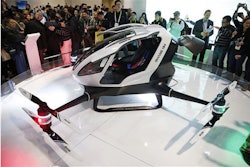The supply chain has often been a ground for the early adoption of technologies, with barcoding and RFID widely implemented for tracking years ago, and wearable technologies such as ring scanners used for warehouse picking during the last decade. Thanks to the miniaturization of technologies and the reduced cost of computing power, the supply chain — and manufacturing — are entering their own new phase of technology evolution.
Linear supply chains are becoming obsolete as the Internet of Things (IoT) and its network of sensors and devices in manufacturing organizations enable a network which is more connected, intelligent, scalable and rapid.
According to a recent Accenture survey, the percentage of enterprises already deploying connected IoT devices is well over one third, with another 17 percent engaged in pilots. The study found that nearly nine out of ten enterprises believe the IoT will improve their supply chain in the next three years, while another estimated that it is likely to generate $8 trillion in the next decade, with supply chain and logistics alone accounting for $1.9 trillion of that.
But how is our investment in IoT going to provide returns?
Enhanced visibility: No more blind spots?
Every supply chain operative knows that visibility is the key to success. But they also know that they can’t always control — or even know — what happens in different parts.
The Industrial IoT (IIoT) can increase real-time visibility of the supply chain through advanced sensor networks. It will also serve to bring disparate processes from procurement through to manufacturing, transportation to final delivery, under greater control.
While we’ve been able to track the temperature and location of goods for some time, we’re now able to tighten the integration of a raft of other measurements for tracking. Sensor data can now provide answers to questions such as:
- Has a product or part been exposed to humidity, pressures or shocks and for how long?
- Has a delicate part been dropped and damaged along the way, even if impossible to detect via the naked eye?
Enhanced visibility can provide significant benefits to businesses in sensitive and regulated industries such as food or chemicals, and any industry where provenance tracking is required. It can also help companies improve the reverse supply chain when products are returned.
All these disparate data sources can be pulled centrally into one place as they are collected from across the world, providing a central and constant view as to how a supply chain is operating.
Of course, the value of the IoT in every industry rests on the data it creates. Businesses should apply analytics tools and data visualization to access and understand this information after-the-event and in near real time. This will allow them to work more closely with partners to make time-sensitive data-driven decisions, based on insight rather than guesswork.
Better remote manufacturing capabilities: No more supply chain?
The IoT also brings capabilities to completely disrupt supply chain and manufacturing operations.
3D printers, for example, do not just change the way parts are made, but could enable elements of supply chains to make the parts themselves. If, for example, a cloud of volcanic ash stops flights shipping spare parts, digitized product plans could be shared for the printing of these parts where they’re urgently needed. During normal operations but in remote environments such as oil rigs, printing materials can be stored ready to create parts as and when they’re needed, along with the relevant plans.
This is no longer about improving a physical supply chain, but about establishing a data supply chain which ensures the information to create those parts is where it needs to be, securely, enabling the right processes and informing decisions.
Beyond the supply chain: Predictive asset management & the connected worker
The increased availability of sensors is a key driver behind the growth of the IIoT. However, sensors in asset management within plants and warehouses can enable more than just tracking, they can transform operations through predictive and preventative maintenance.
Generators, pumps or any other machinery can be equipped with sensors, feeding data directly to an analytics engine. As soon as something starts to vibrate too much, operate at a higher temperature than usual, or deviate in any way from ‘normal’ operation, the red flags will start to fly. This will allow for immediate investigation of the issue. If necessary, maintenance can then be scheduled for quiet periods, with the IoT-enabled supply chain ensuring delivery of materials to the point of need for repairs.
For the workforce, new wearable technologies such as smart, camera enabled headsets will speed up the process of issue identification and repair work on the ground. These connected devices enable hands-free assistance, including over-the-shoulder coaching and the ability for workers to download the latest relevant manuals at the point of repair. This reduces the potential for error and even enables work to be checked there and then by a second expert located elsewhere.
The IIoT can put the power to make data-driven decisions firmly in an operations manager’s hand, reducing the number of incidents where that hand is forced by a sequence of unforeseen events.
What you don’t know can hurt you
The Industrial Internet of Things is blending our physical and digital worlds, and will transform supply chains and manufacturing by creating visibility into areas of operation not transparent before. It will empower manufacturers to optimize their operations, and to diversify their offerings, providing additional, data-based services and creating new revenue streams.
Manufacturers must begin to experiment and pilot these new IIoT technologies and build experience and capabilities in-house or through partnerships to help steer their way through this evolutionary phase. Those organizations that prepare accordingly will thrive and drive this digital disruption, rather than be disrupted by it.
Bob Barr is a Global B2B Commerce Lead with Accenture Interactive and David Freeland works in Connected Operations at Accenture Mobility.























